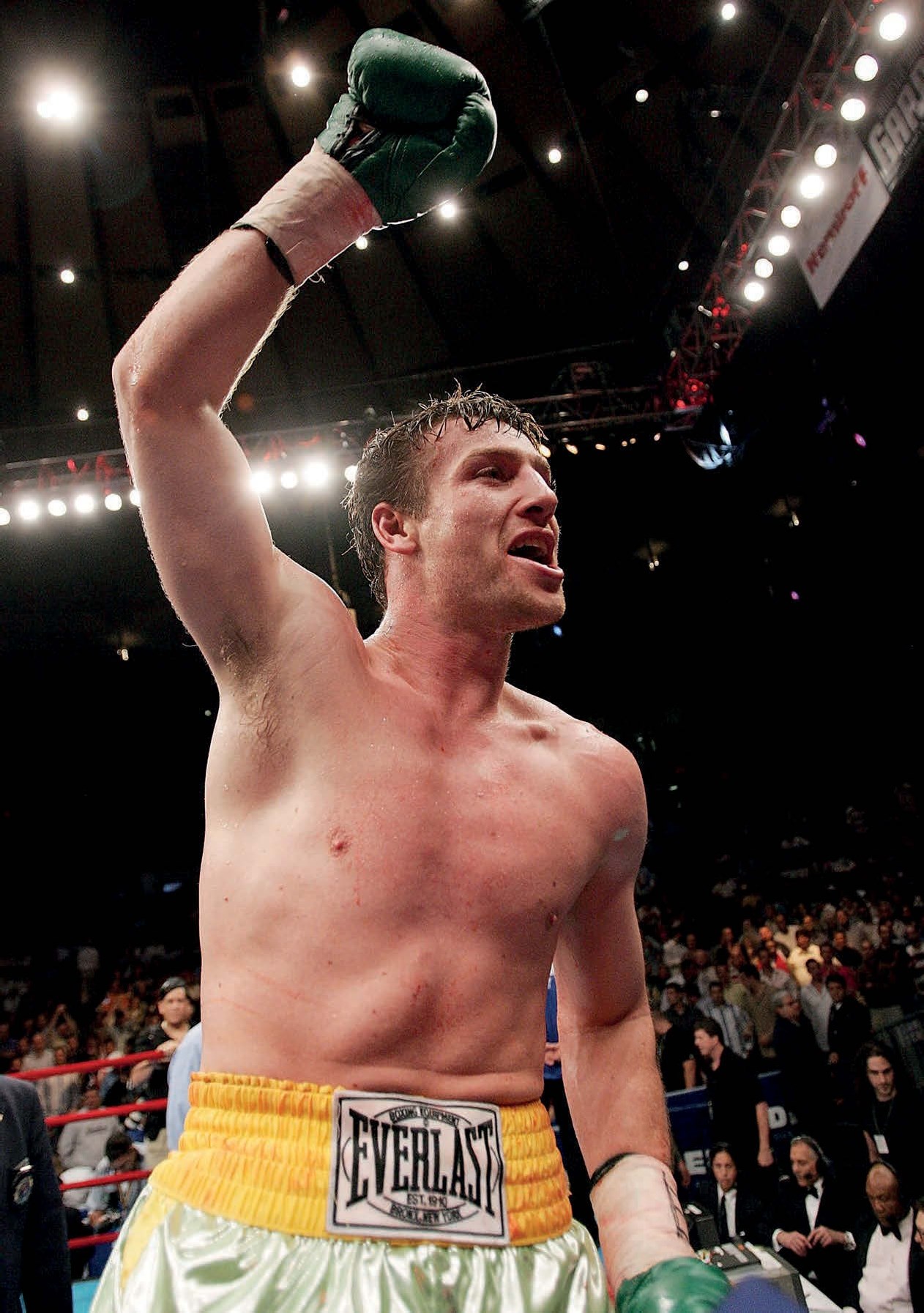
ALL HEART:Duddy celebrates victory
Photo: GETTY IMAGES
ON September 29, 2006, John Duddy fought Yory Boy Campas at the Theater at Madison Square Garden. Duddy was never a great fighter in the traditional sense. But that night, he was great.
A native of County Derry, Ireland, Duddy lived and trained in New York. “I feel at home in America,” he said. “But I’m a guest here. My home will always be in Ireland. I’m not Irish-American. I’m an Irishman who’s living now in New York.”
Duddy was gracious and charming with a thick Irish brogue. He wasn’t just media-friendly; he was friendly to everyone. He looked like a fighter from an old-time movie. In other words, he didn’t look like a fighter. His face was too pretty. His body lacked the clear muscle definition that characterizes many of today’s elite athletes. But his charisma and action style made him popular in the Irish-American community.
Duddy was also linked to a seminal moment in Irish history. On Sunday, January 30, 1972 (a day known as “Bloody Sunday”), fourteen unarmed demonstrators were shot to death by British soldiers during a civil rights march in Northern Ireland. The march had been organised by Derry MP Ivan Cooper to protest a policy of internment without trial that the British government had introduced on August 9, 1971. One of the dead was seventeen-year-old John Francis Duddy.
“He was my uncle,” John said. “That’s my history, and there’s nothing I can do about it. His name was John Francis Duddy, and my name is John Francis Duddy. He was a fighter and I’m a fighter, but I didn’t become a fighter because he was a fighter. My father never talked at length about my uncle when I was growing up. It wasn’t a political home. We were taught to treat people with respect regardless of race, creed, or colour. My uncle’s death was a tragedy but it happened years before I was born.”
Duddy was an atypical prizefighter. There was no wellspring of anger, no history of parental abuse. He’d never slept on the streets or gone hungry as a child.
His interest in the sweet science began with his father; a club fighter who posted a 3 and 4 record in the early 1980s. “He took me to the gym,” John recalled. “I started training for the fun of it when I was five and had my first fight at seven. My father allowed me to do it, but he also encouraged me to play other sports and do other things. He always made it clear that I could stop if I wanted to.”
Duddy had 130 amateur fights and won 100 of them. In March 2003, he came to America. “That was my dream,” he said. “I’d been to America a few times as an amateur and knew this was the place to be.” Soon, he was training at the legendary Gleason’s Gym. He turned pro with a first-round knockout of Tarek Rached on September 19, 2003. Eighteen months later in what was expected to be the first big test of his pro career, he scored a first-round knockout of 16-0 Lenord Pierre to run his record to 9-0 with 9 KOs.